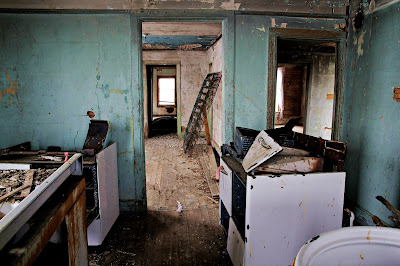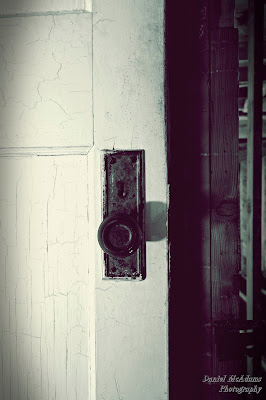Over 105 years ago, Oliver Toussaint Jackson(O.T. Jackson) had a dream of setting up an African American colony in Colorado. After four years of searching(including looking at homestead tracts in Elbert, Larimer and Weld Counties), he decided on a location about 30 miles southeast of Greeley. He purchased 320 acres of land and on May 5, 1910, Dearfield was born.
Why is it called Dearfield? Well, I am glad you asked. The name Dearfield was suggested by Denver physician and one of the early settlers, Dr. J.H.P. Westbrook, as the land would be very dear to their hearts.
When Jackson initially founded Dearfield, he had the full support of the Colorado chapter of the National Negro Business League, but when Booker T. Washington, who was the national president, refused to endorse the project, they subsequently withdrew their support as well. This would not deter Jackson, and he and a few other families began the settlement on their own.
By the time the first winter rolled around, there were a total of seven families who made up the town. Only two of which actually had wooden houses. The other five families lived in tents dug into holes in the ground. And the first winter challenged the settlers. According to Jackson, "the suffering was intense...buffalo chips and sagebrush were our chief fuel. Three of our horses died from starvation and the other three were too weak to pull the empty wagon." Even with the hardships, they persevered and the settlement lived on.
By 1915, Dearfield had gone from seven families living in tents(and two in houses) to 27 families living in wooden cabins. By 1920, there were 700 residents, a school, a grocery store, a boarding house, a restaurant and two churches(one Methodist and one Baptist). A canning factory and college were planned, but a series of major historical events were not to take too kindly to the town. The initial settlers came from cities in Colorado, but once word spread of Dearfield's success, blacks from as far away as Arkansas, Tennessee and Georgia came to settle.
Before we get to the decline of the town, let's talk a little about the town and people who lived there.
The families that lived in Dearfield made their living primarily through agriculture. Being an arid climate and being absent of irrigation, the farmers used a process of "dryland" farming to make their living. Dryland farming was where the farmers would rely on precipitation to grow their crops. The main crops that were grown in Dearfield were winter wheat, potatoes and sugar beets. The dryland farming technique yielded just enough crops to sustain the town, as well as provided enough extra for selling at the local railroad station. According to Dr. George Junne, professor and chair of African Studies at the University of Northern Colorado, some of the men in the community worked in places such as Denver and Boulder during to raise more money for equipment, while the women tended to the families and fields. The men would then return for the weekends to help more.
At it's peak, Dearfield had over 15,000 acres in cultivation. The town was worth more than $750,000, which equates to over $10 million in today's standards. Then came the Dust Bowl and Great Depression.
Even though the town peaked about 1920, the end of World War One in 1918 started the beginning of the end for Dearfield. Throughout the war, there was a demand for the crops being grown, which helped Dearfield's economy thrive. The wars end saw a drop in demand for crops, which brought about an end to the once steady growth of the town. As the years marched on, the Dust Bowl found it's way to Weld County in 1929. Farming became much harder. Families began to default on their mortgages and equipment loans. One by one, the families sold their farms. By 1940, only 12 people still lived in the once thriving town.
O.T. Jackson went to work trying to turn the situation positive. During World War II, he tried to sell the town to Governor Ralph Carr for use as an internment camp for Japanese prisoners of war, but that failed. He then offered the townsite for sale, but this failed too. On February 18, 1948, O.T. Jackson passed away in Greeley.
Jackson's niece, Jenny Jackson, was the towns last resident. She lived in Dearfield until her death in 1978, With her passing, the town became a ghost.
Though many have not even heard of the town, Dearfield has a significant place in Colorado's history. According to Colorado State Historian Bill Convery, Dearfield, "represents a dream, and Colorado is full of dreamers. For O.T. Jackson and the citizens of Dearfield, that dream of self-sufficiency was enough for them to risk everything they had built up in order to achieve that dream." Convery also points out, "how challenging it can be to live in Colorado's environment. It wasn't racism that brought Dearfield down. It was the same agricultural drought and depression that wiped out hundreds of thousands of other farmers on the Great Plains in the 1920s and 30s. Drought is colorblind. That is the bittersweet story of Colorado, of achieving something very special for a very brief period of time and being challenged by the land to sustain it. That's a very Colorado story."
Pulling into Dearfield, the thick fog still hung around. Quite a drastic opposite feeling from the arid, dry Dust Bowl that killed the town almost 100 years ago. I met up with my buddy Zach from Hanging Negatives Photography. We walked through what remains of the town. A heavy silence and stillness fills the air. Inside the buildings, you can feel the history. It felt like stepping through a time warp and going back in time. The atmosphere is filled with the heaviness of a town that had such a bright future, a future full of major ambitions. Now all that remains are a handful of buildings and a few foundations. A few modern houses are spread out around the townsite, but they didn't seem to mind us taking photos. After having been wanting to visit the town for over a year, I was very happy to finally see and experience it for myself. Welcome to Dearfield.
Here are some good links for reading more on Dearfield:
http://frontporchstapleton.com/article/remembering-dearfield-black-history-colorado-history/
http://www.blackpast.org/aaw/dearfield-colorado
http://www.greeleyhistory.org/pages/dearfield.htm
A historic photo of Dearfield.
My photos:









































